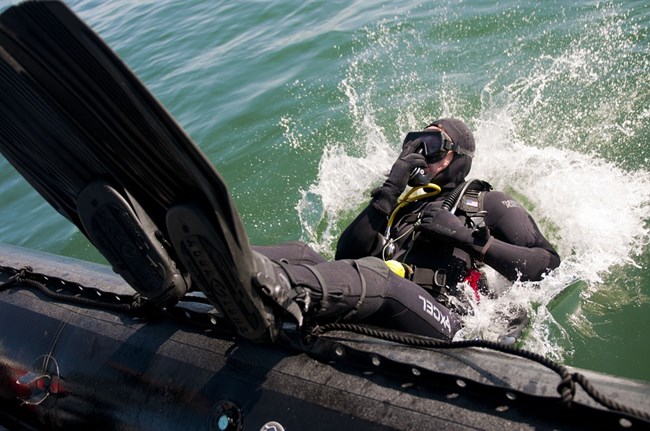Last updated: September 28, 2017
Article
Why Preserve Shipwrecks

Public Domain Image
Shipwrecks are an exciting and challenging window into the study and presentation of our past. Whether diving for pleasure or for research, these submerged resources are valuable classrooms within which a vast array of knowledge, beauty and heritage resides. The story of each shipwreck is woven into the intricate tapestry of regional history. Many of these ships were famous locally and were vitally important to the development of Florida's economy. On a much grander scale, preservation and research of these sunken vessels provide information on the history of shipbuilding as well as commerce in the region. From the days of Spanish galleons through the age of steamboats, these important archeological resources contain a wealth of information not found in the documentary record. In the past, state permits have been issued for the commercial salvage of some of the Spanish plate fleet shipwrecks. Now, the Florida Bureau of Archaeological Research has developed programs to protect historic shipwrecks in its waters for all citizens and to teach the public about the state's maritime heritage. Some shipwrecks are further protected and interpreted through designation as Florida Underwater Archaeological Preserves. Many of the wrecked vessels that sailed in Spanish plate fleets are further protected by their status as sovereign property of the Government of Spain.
Shipwreck preservation is equally important as a viable component in marine ecology. Once a shipwreck becomes stable it becomes part of its environment. Marine life envelop these remains as a foundation and frame for survival, helping to sustain the marine ecosystem. Coral creates beautiful reefs that provide a habitat for an abundance of marine life that depends upon the resources and protection that a reef environment provides. Fish, sponges, clams, anemones, octopi, squid, crabs and lobsters interact and thrive among these lost ships. Human divers relish the opportunity to visit these treasures and experience this underwater kaleidoscope of life and history.
Shipwreck preservation happens every day in Florida waters. The largest and most difficult responsibility involves the physical protection of sunken vessels and the surrounding marine environment. The National Park Service and the state of Florida actively work with local communities and chartered diving services to preserve sites. Due to the popularity of diving and snorkeling, these efforts focus on the education of sport divers about the importance of shipwrecks and the great care required when visiting them.
Underwater archeologists are committed to investigating and studying history left on the ocean floor. By studying these vessels, researchers are gaining a better sense of the physical and economic development in and around Florida, evolving shipbuilding methods and what innovations occurred during the transition from wind-powered ships to steam-powered ones. Archeologists also seek insight into understanding the people that were sailing, and the products that were coming through the region.
Within the National Park Service, the Submerged Resources Center uses nondestructive approaches--sampling and recording methods not typically found in excavation-oriented archeology--to study and document shipwrecks while leaving the wreck and associated remains as close as possible to the conditions in which they were found.
Shipwreck exploration is a wonderful adventure. To ensure the same opportunities to future divers and researchers requires an understanding of the complex environment surrounding shipwrecks and a commitment to shipwreck site preservation. Protecting these resources will allow the continued interpretation and understanding of the lives of mariners and the struggles and successes they encountered while navigating the dangerous shoals and straits that surround the Florida peninsula.
